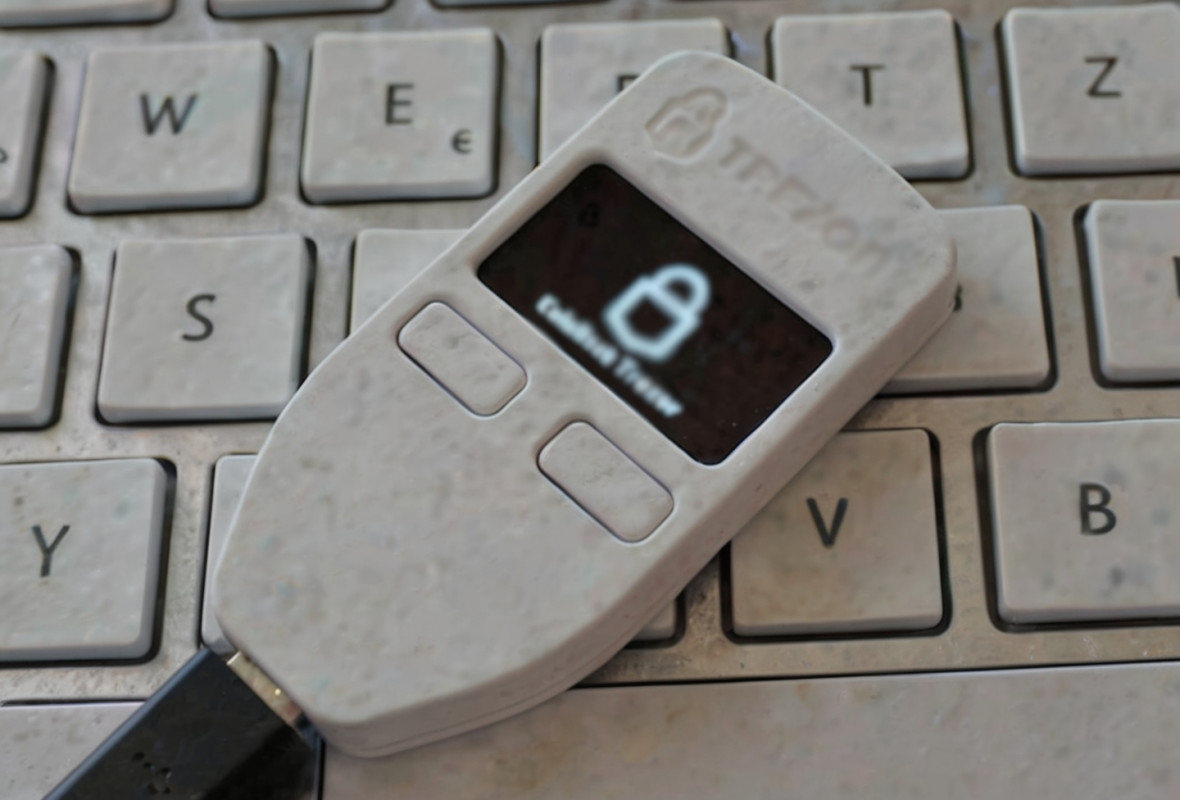
As we celebrate a decade since the inception of the first hardware wallet, it’s astonishing to witness the advancements in Bitcoin security. From the uncertain self-custody practices of the past to the revolutionary launch of the Trezor Model One, this evolution has redefined our approach to safeguarding digital assets. With a wealth of experience accumulated over the years, it’s an opportune moment to reflect on the challenges of early Bitcoin self-custody, the transformative effect of the first hardware wallet, the critical role of self-custody in the contemporary Bitcoin environment, and the groundbreaking innovations that continue to drive the future of cryptocurrency security.
The Birth of Hardware Wallets
This story traces back to 2011, when Marek “Slush” Palatinus logged into his mining pool server, only to find that 3,000 BTC had vanished. A mining pool allows miners to aggregate their computational resources to enhance their odds of successfully mining Bitcoin blocks. Slushpool, now known as Braiins Pool, was the first-ever mining pool in the Bitcoin ecosystem, founded in 2010.
This incident underscored a critical issue: even technically adept Bitcoin users were susceptible to online threats. At that time, managing and securing Bitcoin was a formidable challenge, with private keys stored directly on computers. However, securing data on these devices was inherently risky; computers are vulnerable to a multitude of threats, allowing cybercriminals to access the private keys needed to control Bitcoin. The hack that resulted in Palatinus losing 3,000 BTC was a stark reminder of these early risks.
In response to the evident demand for a straightforward, dedicated device to securely store Bitcoin, Slush and Pavol “Stick” Rusnák took it upon themselves to engineer the world’s first hardware wallet. Their aspiration was to create an offline computing device specifically crafted for secure Bitcoin storage, thus making it user-friendly for those less technically inclined. The idea was simple yet revolutionary: a compact, single-purpose gadget capable of safeguarding private keys in a secure, offline environment, shielded from digital threats.
The Era Before Hardware Wallets
Prior to the widespread adoption of hardware wallets, users relied on software wallets installed on their computers or smartphones, exposing them to various security vulnerabilities. Malware infections and attacks were rampant. Although paper wallets offered a more secure alternative, they still required computer usage for setup. More secure storage solutions, such as air-gapped computers, demanded substantial technical knowledge, and even these methods often lacked sufficient security for larger Bitcoin holdings.
The user experience with early Bitcoin wallets was also fraught with issues; they were often clunky and presented complicated backup procedures. Numerous users mismanaged wallet backups, leading to irreversible loss of funds if their devices were misplaced or compromised. Many remained oblivious to best backup practices, exacerbating the risk due to the absence of standardized methods. A notable improvement in backup standardization came with the arrival of Hierarchical Deterministic (HD) Wallets via BIP32 in 2012, facilitating easier, more reliable backups. Yet, even with these advancements, user-friendly options were scarce for newcomers, rendering Bitcoin self-custody a perilous and convoluted undertaking.
The Inaugural Hardware Wallet
In the run-up to 2014, there were various efforts to create simple, single-purpose devices for cryptocurrency storage, but these initiatives failed to gain momentum or adhere to necessary security standards. Acknowledging this demand for a reliable solution, Slush and Stick spent two years assessing the landscape before ultimately deciding to develop their own hardware wallet.
In 2014, they launched the Trezor Model One, the world’s first hardware wallet, renowned for its intuitive design, genuine random private key generation, and the capability to sign transactions entirely offline. Moreover, it introduced the BIP39 standard, a groundbreaking protocol allowing wallet backups using a 24-word seed, widely adopted by many wallets and familiar to anyone who has engaged in Bitcoin self-custody.
Upon connecting the device for the first time, users are guided through the wallet creation process. The device generates a recovery seed, which serves as a human-readable manifestation of the wallet’s master private key and grants the user the ability to recover their wallet in case of a malfunction. Users are prompted to note this word list on paper, ensuring their wallet is backed up and that private keys remain offline.
This setup process guarantees that users make a backup and protect it adequately. The friendly design provides robust security, rendering hardware wallets accessible to newcomers and experienced users alike.
The Open Source Principle
A fundamental tenet of Bitcoin is the commitment to open-source philosophy, which is why Trezor’s founders adhered to these principles while developing the Trezor Model One. This methodology has been embraced by many manufacturers within the industry. Open-source software enables community audits and verification of a system’s integrity. This transparency allows for the early identification and resolution of potential weaknesses and encourages community-driven improvements. The inaugural hardware wallet was open source, a trend embraced across the sector to ensure transparency, echoing the Bitcoin ethos, “Don’t trust; verify.”
The Crucial Role of Self-Custody
Throughout Bitcoin’s evolution, numerous crypto exchanges and custodians have faced catastrophic failures or severe security breaches, underscoring the necessity of possessing your private keys. The phrase “not your keys, not your coins” highlights the risks associated with relying on third-party institutions and the immense repercussions that can come from hacking, mismanagement, or legal troubles faced by custodians.
The Mt. Gox collapse in 2014, one of the earliest and most infamous exchange failures, resulted in the loss of 850,000 Bitcoins, worth hundreds of millions of dollars at that time. This debacle stemmed from hacking coupled with misadministration, leaving users unable to recover their assets. In 2016, Bitfinex experienced a hack that led to nearly 120,000 Bitcoins being stolen. QuadrigaCX’s users lost access to their funds in 2019 due to the sudden passing of its founder, who held the exclusive keys to the exchange’s wallets. In 2019, Cryptopia also suffered a major breach, and Binance, the largest cryptocurrency exchange by trading volume, has encountered hacks and faces heightened regulatory scrutiny. The more recent FTX failure in 2022 only reinforced the risks associated with centralized entities. The cumulative effects of mismanagement and fraud have resulted in the loss of billions, affecting countless users and eroding trust in centralized exchanges.
By utilizing hardware wallets, individuals secure true financial autonomy, safeguarding their digital assets against the vulnerabilities posed by trusted custodians.
The Transforming Landscape of Hardware Wallets
Over the last ten years, the hardware wallet sector has seen tremendous growth, with a multitude of companies providing various products and features to cater to diverse user needs. User interfaces range from simple button navigation to touch screens and full keyboards. Many devices are now compatible with multiple cryptocurrencies, while others specialize exclusively in Bitcoin, catering to both novices and seasoned users alike.
Recent advancements include the integration of secure elements—specialized chips designed to safeguard devices against physical threats. However, currently available secure elements are predominantly closed-source, raising concerns regarding transparency. To counter this trend, companies like Tropic Square are striving to develop open-source secure elements to bolster trust and security.
Additionally, significant strides in enhancing wallet backup security and reliability have been made. Techniques such as Shamir’s Secret Sharing, Multisignature Wallets, and SeedXOR help eliminate single points of failure, making it drastically more challenging for malicious entities to compromise wallets.
Looking forward, further enhancements in hardware wallet security and usability are anticipated. One promising development is the broader adoption of the new and improved standard, SLIP39, which utilizes Shamir’s Secret Sharing. This standard is increasingly preferred over the traditional BIP39 because of its superior security and user-friendliness. With SLIP39, users start with a single list of words for backup and can subsequently transition to a “sharded” backup with multiple shares. This approach presents a flexible and highly secure solution, making sophisticated security measures more accessible and practical for a broader audience.
Anticipating the Next Ten Years
As we mark the anniversary of the first hardware wallet, it’s evident that this innovation has fundamentally altered the landscape of cryptocurrency security. From its humble origins as a project born from passion to a revered name in the sector, Trezor has paved the way for innovations that empower countless individuals to seize control of their financial destinies. The evolution from the initial prototypes to the advanced devices we utilize today is a testament to the vision and dedication of the Trezor team.
With ongoing enhancements in hardware wallet functionality and an unwavering commitment to security and transparency, the future appears bright. As we look ahead to the next decade, the industry’s focus remains on advancing Bitcoin security and usability, ensuring that self-custody becomes progressively more accessible and secure for everyone.
This is a guest post by Josef Tetek. The views expressed are solely his own and do not necessarily represent those of BTC Inc or Bitcoin Magazine.








